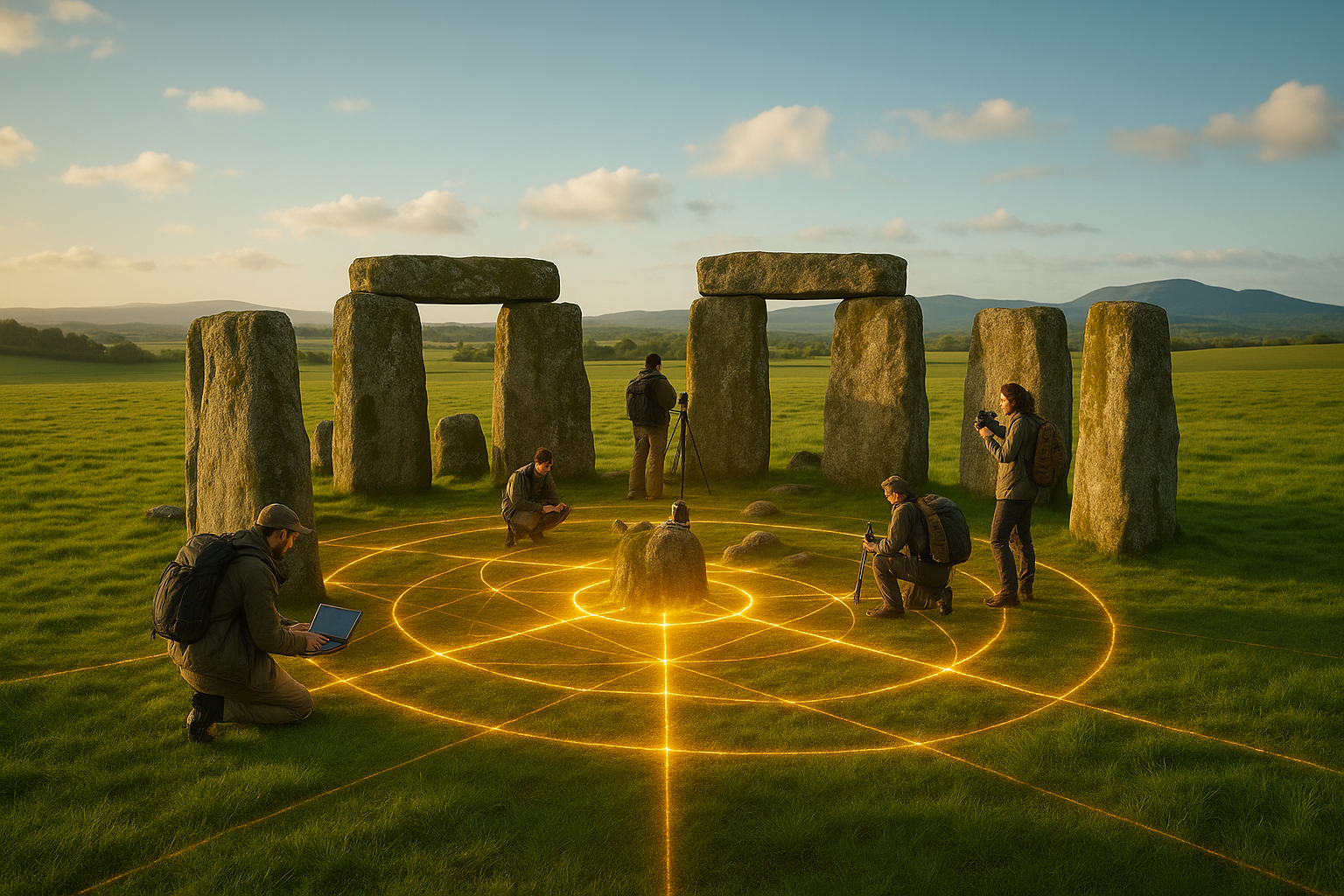In the quiet whispers of the wind rustling through leaves, in the steadfast gaze of ancient trunks reaching skyward, and in the soft, earthy aroma of the forest floor, there lies a profound connection between trees and humanity—a connection that transcends time. Trees, the silent sentinels of our planet, serve not merely as sources of oxygen and shade but as living tapestries woven with the threads of history, culture, and spirituality. They are the timeless witnesses to the evolution of civilizations and the custodians of stories long forgotten, bridging the gap between past and present in ways that continue to inspire awe and reverence.
🌳 Across cultures and continents, trees have stood as powerful symbols and sacred entities. From the Bodhi tree under which Buddha attained enlightenment to the mighty oaks revered by the Celts, trees have been central to spiritual practices and cultural narratives. They embody resilience, wisdom, and continuity, qualities that have endeared them to societies throughout history. As we delve deeper into this relationship, it becomes clear that trees are not just passive bystanders in our world. They are active participants in our collective journey, serving as ancestral transmitters that connect generations through shared stories, beliefs, and traditions. This intricate bond invites us to explore how trees have been woven into the very fabric of human existence, offering lessons and insights that are as relevant today as they were centuries ago.
In the unfolding narrative of human history, trees have been pivotal in shaping cultures and communities. They have provided shelter, food, and materials for tools and art, fostering the development of civilizations. More than mere resources, however, trees have also been seen as guardians of memory and tradition. They have borne witness to rites of passage, marked sacred spaces, and even served as oracles of divine wisdom. By examining the roles that trees have played in various cultures, we gain a deeper understanding of their significance as vessels of ancestral knowledge and spiritual heritage. Through stories, myths, and legends, trees teach us about our place in the world, our relationship with nature, and the values that bind us across generations.
In this article, we will journey through time and across continents, exploring the multifaceted roles that trees have played in connecting the past with the present. We will delve into the symbolic meanings attributed to trees in different cultures, the scientific insights into their longevity and memory, and the contemporary movements that seek to preserve these majestic beings as living archives of human history. By understanding the profound ways in which trees serve as ancestral transmitters, we not only honor their enduring legacy but also recognize our responsibility to protect and cherish these natural storytellers for future generations. Join us as we explore this rich tapestry of tradition, nature, and humanity, rooted in the enduring wisdom of trees. 🍃
The Historical Significance of Trees in Human Culture
Trees have been an integral part of human culture for thousands of years. They are not only crucial for the environment, providing oxygen and shelter, but they also hold a deep spiritual and historical significance for many cultures around the world. From the sacred groves of the Celts to the revered banyan trees in India, trees have been viewed as living symbols of life, growth, and connection to the divine. Their towering presence and longevity make them ideal symbols for transmitting stories, traditions, and values from one generation to the next.
In many indigenous cultures, trees are seen as ancestors themselves. This belief is rooted in the idea that trees are living beings that have witnessed the passage of time and the evolution of human societies. For instance, the Aboriginal people of Australia consider certain trees to be the embodiment of their ancestral spirits. These trees serve as a living testament to their history and are treated with great respect and reverence.
Furthermore, trees are often used as metaphors in literature and art to convey themes of growth, resilience, and continuity. The image of a tree with deep roots and expansive branches is a powerful symbol of stability and interconnectedness. This metaphor extends to the idea of a “family tree,” which illustrates the connections between generations and the passing down of traits and traditions. Such symbolism highlights the role of trees as transmitters of ancestral knowledge and cultural heritage.
Table: Trees in Different Cultures
| Culture | Significant Tree | Symbolism |
|---|---|---|
| Celtic | Oak | Strength and endurance |
| Indian | Banyan | Immortality and fertility |
| Japanese | Cherry Blossom | Beauty and transience |
| Native American | Cedar | Protection and healing |
Check out the table above for a quick comparison of how different cultures have revered various types of trees throughout history. This diversity in symbolism reflects the universal importance of trees in human society.
Scientific Insights into Trees as Memory Keepers
Beyond their cultural significance, trees serve as biological recorders of environmental history. Dendrochronology, the study of tree rings, is a scientific method used to date events and changes in the environment. Each ring represents a year of growth, and the thickness can indicate the climatic conditions of that year. By analyzing tree rings, scientists can gain insights into past climate conditions, natural disasters, and even human activities such as deforestation and land use changes.
This ability to record environmental data over centuries makes trees valuable tools for understanding historical climate patterns and predicting future trends. For instance, by studying the rings of ancient trees, researchers have been able to reconstruct climate variations over the past millennia, providing crucial information about how climate change has impacted the Earth over time.
Moreover, trees have a remarkable capacity to adapt to their environment, a feature that is encoded in their genetic makeup. Advances in genomics have allowed scientists to study the genetic changes in trees over generations, revealing how they respond to environmental stresses and adapt to new conditions. This research not only enhances our understanding of tree biology but also underscores their role as transmitters of ancestral knowledge encoded in their DNA.
Modern Uses of Trees in Cultural and Spiritual Practices
In contemporary society, trees continue to hold spiritual and cultural significance. Many people turn to nature and, specifically, to trees for solace, meditation, and spiritual renewal. Practices such as forest bathing, which originated in Japan as “Shinrin-yoku,” involve immersing oneself in a forest environment to promote mental and physical well-being. This practice underscores the therapeutic benefits of connecting with trees and nature, highlighting the enduring bond between humans and trees.
Additionally, trees are often planted as living memorials to honor individuals or commemorate significant events. This practice not only serves as a tribute to those who have passed but also creates a lasting connection between the present and future generations. These memorial trees act as living legacies, symbolizing the continuity of life and the transmission of values and memories.
Moreover, urban planning increasingly incorporates green spaces and trees to improve the quality of life in cities. Trees are strategically planted in urban areas to provide shade, reduce pollution, and enhance aesthetic appeal. This integration of trees into urban environments is a testament to their continued importance in modern society, both as functional elements and as symbols of connection to our ancestral past.
Video Recommendation
Watch the video below to explore the profound relationship between humans and trees and how they serve as ancestral transmitters: “The Secret Life of Trees” by National Geographic. 🌳✨
Challenges and Opportunities in Preserving Ancestral Trees
Despite their significance, many ancestral trees face threats from human activities and environmental changes. Deforestation, urbanization, and climate change pose significant risks to these ancient giants. The loss of these trees not only impacts biodiversity but also erodes cultural heritage and ancestral connections. It is crucial to implement conservation strategies to protect these vital links to our past.
Efforts to preserve ancestral trees involve a combination of legal protection, community engagement, and scientific research. Conservation initiatives often require collaboration between governments, NGOs, and local communities to ensure that these trees are preserved for future generations. Education and awareness campaigns play a vital role in highlighting the importance of these trees and encouraging sustainable practices.
There is also an opportunity to leverage technology in tree conservation. Tools such as satellite imagery and drones are increasingly used to monitor forest health and detect illegal logging activities. These technologies provide valuable data to inform conservation strategies and ensure the protection of ancestral trees. By embracing innovative solutions and fostering a collective sense of responsibility, we can safeguard these natural treasures and their cultural significance for generations to come.
- Recognize the cultural and historical significance of trees in various societies.
- Understand the scientific methods used to study trees as recorders of environmental history.
- Explore modern practices that emphasize the spiritual and cultural connection to trees.
- Identify challenges and opportunities in preserving ancestral trees.

Conclusion
### Conclusion: Rooted in Tradition: How Trees Serve as Ancestral Transmitters Connecting Past and Present
In conclusion, the exploration of trees as ancestral transmitters offers a profound insight into how nature serves as a bridge between the past and the present. Throughout this article, we have delved into the multifaceted roles that trees play in preserving history, culture, and identity. From their physical presence as ancient witnesses of time to their symbolic representation in folklore and traditions, trees stand as steadfast guardians of our collective memory.
One of the key points addressed is the cultural significance of trees across different civilizations. Trees like the Oak, Baobab, and Bodhi have been revered not only for their physical benefits but also for their spiritual and cultural importance. These trees have acted as living archives, holding stories and wisdom passed down through generations. In many cultures, they are seen as sacred, embodying the spirits of ancestors and serving as conduits for communication between the earthly and spiritual realms.
Another crucial aspect is the environmental role of trees in sustaining life on Earth. They are indispensable to our ecosystem, providing oxygen, improving air quality, conserving water, preserving soil, and supporting wildlife. This dual role of cultural and environmental significance underscores why trees are often seen as the backbone of life itself. 🌳
Furthermore, the symbolic representation of trees in art and literature highlights their role as vessels of human emotion and thought. Artists and writers have long used the imagery of trees to convey themes of growth, decay, and rebirth, illustrating the intricate connection between human life and nature. This symbolic presence reinforces the notion that trees are not just passive elements of our environment but active participants in the human story.
In reinforcing the importance of this theme, it becomes evident that our relationship with trees is symbiotic. As we continue to rely on trees for ecological balance and cultural heritage, it is imperative that we take actionable steps to protect and preserve them. Conservation efforts and sustainable practices are crucial in ensuring that trees can continue to thrive and fulfill their role as ancestral transmitters for future generations.
The timeless connection between humans and trees serves as a reminder of the enduring legacy we are part of. By acknowledging this relationship, we not only honor our past but also pave the way for a sustainable future. This article encourages you, the reader, to reflect on the trees in your own life and consider how they might connect you to your heritage, your community, and the planet.
We invite you to share your thoughts and experiences in the comments section below. How have trees played a role in your personal history or culture? Are there any particular trees that hold special significance for you or your community? By sharing your stories, you contribute to the ongoing narrative of how trees connect us to our past and shape our present.
Feel inspired to take action by planting a tree, supporting reforestation efforts, or simply spending more time in nature to deepen your connection with the natural world. 🌿
In conclusion, the significance of trees as ancestral transmitters transcends mere physical existence. They are symbols of resilience, continuity, and hope, bridging the gap between the past and the future. By recognizing and celebrating this connection, we can foster a deeper appreciation for the natural world and our place within it.
To further explore this topic, you may find these resources insightful:
– National Geographic: Why Trees Matter
– The Nature Conservancy: The Importance of Trees
– Arbor Day Foundation: Benefits of Trees
Thank you for joining us on this journey of discovery. Let’s continue to nurture our roots and embrace the wisdom that trees provide. 🌲
Toni Santos is a visual storyteller and symbolic naturalist whose creations explore the hidden ecologies and forgotten bonds between humans and nature, as whispered through ancient lore. Through an intuitive and myth-sensitive lens, Toni reveals the sacred choreography between flora, fauna, and human spirit — a world where trees once spoke, rivers remembered, and every herb carried a secret name.
His journey is rooted in the esoteric — in the rituals of forest-dwellers, the botanical codes of shamans, and the unspoken pacts that shaped how ancient peoples lived in deep, reciprocal harmony with the natural world. From sacred groves to serpent-guarded springs, each of Toni’s works reflects a symbolic relationship long obscured by modern forgetfulness.
With a background in visual design and ancestral aesthetics, Toni merges storytelling with sacred ecology. His pieces don’t simply illustrate — they channel. Drawing from myth, mysticism, and lost herbal traditions, he crafts visuals that resonate with the old wisdom: that nature is not background, but kin.
As the creative spirit behind Vizovex, Toni shares collections, visual studies, and articles that illuminate the occulted connections between human life and the wild world. His work calls on us to remember — not just with the mind, but with the senses and the soul — the profound dialogues our ancestors once had with earth, plant, and animal.
His work is a tribute to:
The mythic language of trees, stones, and roots
Forgotten pacts between healers and the wilderness
The sacred knowledge carried in nature’s unseen patterns
Whether you’re a seeker of ancient plant-lore, a mystic attuned to seasonal cycles, or simply someone who hears the forest speak, Toni welcomes you to wander a space where symbolism, nature, and spirit entwine — one myth, one leaf, one vision at a time.





